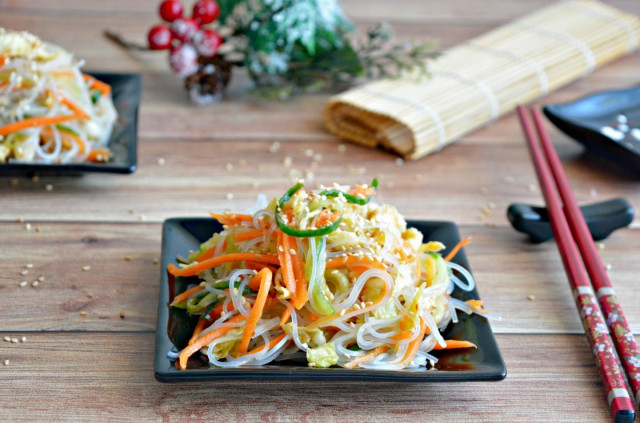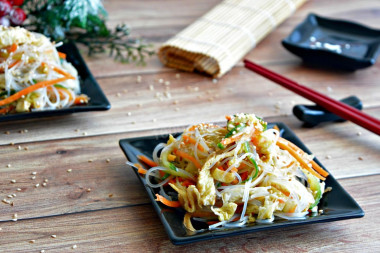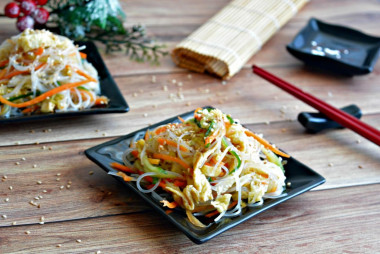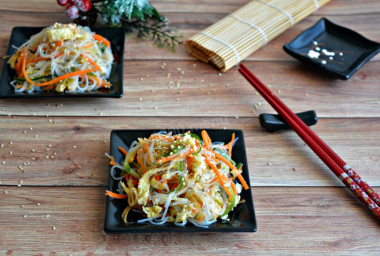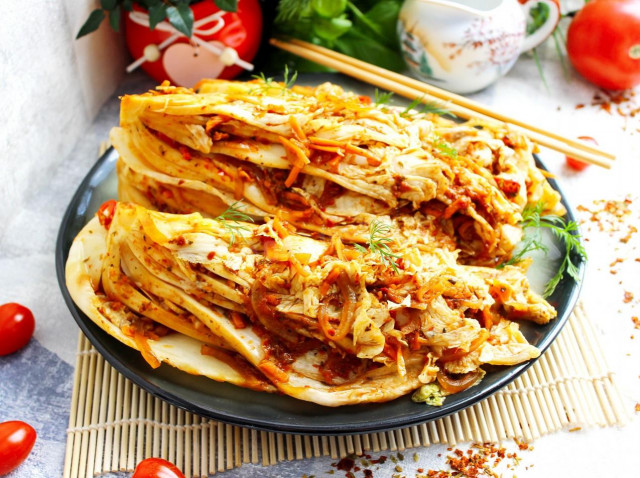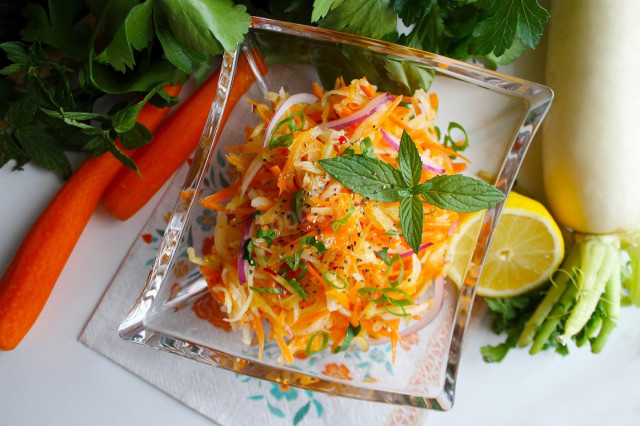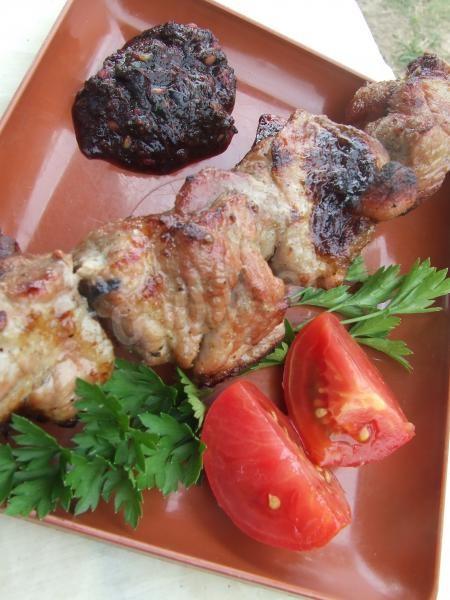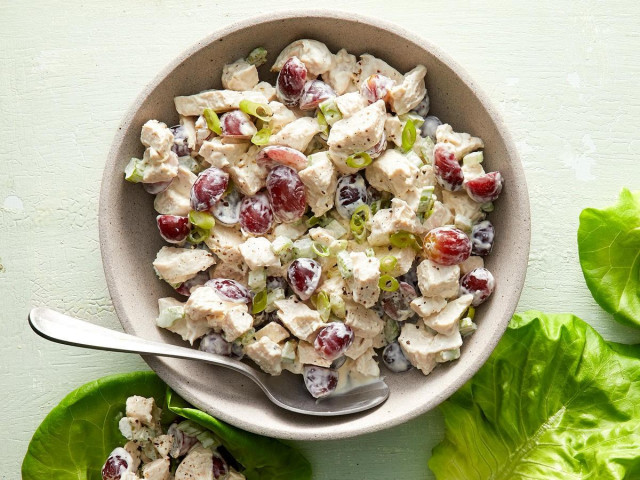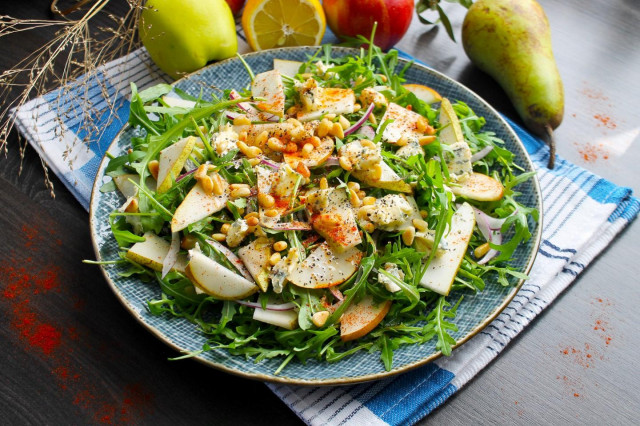Composition / ingredients
Cooking method
Harbin salad in Chinese with funchosa is prepared quickly and easily enough.
So, prepare all the necessary products.
1. The first stage of cooking is the preparation of vegetables. Cucumber, carrot, the right amount of cabbage should be washed, dried and cut into thin strips. Fresh carrots and cucumber can be grated on a grater for Korean carrots.
2. Then the prepared vegetables are sent to the marinade (salad dressing).
3. To prepare the marinade (dressing), mix sesame oil, soy sauce, brown sugar and lemon juice squeezed out of half a lemon. In the absence of sesame oil, you can take ordinary sunflower oil without smell, and replace brown sugar with honey. Instead of lemon juice, you can use rice vinegar or the usual 6%, but it will not be so delicious. If desired, you can add more ground coriander to the dressing.
4. Now prepare rice "glass" noodles, funchosa. You don't need to cook it. It is enough to brew it with boiling water and leave it under the lid for five minutes. Then rinse the funchosa under cold running water and discard it in a colander so that all the water runs off.
5. Meanwhile, prepare the egg pancakes. To do this, beat two eggs with a whisk until smooth. Add salt to the mixture. Fry two pancakes in a hot dry frying pan. Fry them on both sides. Let the pancakes cool, roll them into a roll and cut into noodles.
6. Mix the pickled vegetables, noodles and egg pancakes in a deep salad bowl. The finished funchosa can be pre-cut into 2-3 pieces if it is too long.
7. Fry the sesame seeds in a dry frying pan until golden brown. So sesame reveals its flavor and becomes tastier.
8. Put the finished salad on a plate, sprinkle with toasted sesame seeds and serve to the table.
There are similar salads with funchosa in both Japanese and Korean cuisine. Its preparation is within the power of any hostess.
Bon appetit!
Since the degree of salinity, sweetness, bitterness, sharpness, acid, burning is individual for everyone, always add spices, spices and seasonings, focusing on your taste! If you put some of the seasonings for the first time, then keep in mind that there are spices that it is especially important not to shift (for example, chili pepper).
When adding soy sauce to a dish, it is worth considering that it has a rather salty taste. Reduce the total amount of salt, otherwise you risk over-salting.
Caloric content of the products possible in the composition of the dish
- Fresh cucumbers - 15 kcal/100g
- Carrots - 33 kcal/100g
- Dried carrots - 275 kcal/100g
- Boiled carrots - 25 kcal/100g
- Soy sauce - 51 kcal/100g
- Chinese cabbage - 16 kcal/100g
- Dried whole sesame seeds - 563 kcal/100g
- Shelled sesame seed - 582 kcal/100g
- Salt - 0 kcal/100g
- Lemon juice - 16 kcal/100g
- Brown Sugar - 394 kcal/100g
- Chicken egg - 80 kcal/100g
- Sesame oil - 899 kcal/100g
- Glass noodles - 351 kcal/100g

